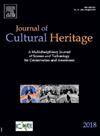考古陶瓷损失补偿的摄影测量、增材制造和传感器化
IF 3.3
2区 综合性期刊
0 ARCHAEOLOGY
引用次数: 0
摘要
水下考古材料对研究、保护和分析提出了独特的挑战,其中包括机械、化学和生物退化因素。这些问题在损失补偿的背景下尤其明显,在这个过程中,陶瓷是稳定的,补充了一种非原始填充材料。3D技术通过其响应性材料、适应性和与现有分析配对的能力的不同适用性,有可能解决其中的一些困难,同时简化文档编制过程。从虚拟模型创建到模型操作,从逆向工程到传感器化,本研究的目标是通过近乎无损的逆向工程来填补工件缺失的部分。虽然直接使用3D打印进行考古保护是一项新兴的技术,甚至更少的研究增材制造陶瓷,但这种3D打印模式与传感器的配对提供了独特的好处。这些尖端的材料可以对温度、湿度、pH值或压力的变化做出反应,并发出信号。这些都是对博物馆环境中物品的管理和稳定性很重要的环境因素。然而,这种增材制造的具体应用几乎从未在任何规模上进行过测试或应用。这在研究中留下了一个明显的空白,这种方法可以开始填补。潜在的目标是创建一种系统的方法来重建丢失的考古陶瓷碎片,特别是海洋背景下的双耳陶罐,它们的尺寸,曲率和其他可变质量的范围,并解决重建过程中面临的挑战。通过Koç大学穆斯塔法V. Koç海洋考古研究中心(KUDAR)和Koç大学制造和自动化研究中心(MARC)实验室之间的合作,该项目不仅旨在通过3D打印填充缺失双耳罐碎片的原型来产生损失补偿,而且还通过传感器集成来监测应用程序的稳定性。这种方法具有许多优点,其中最大的优点是3D打印响应填充的性质-作为一个策展过程,既主动又被动-扩大了围绕这种保护技术的论述。本文章由计算机程序翻译,如有差异,请以英文原文为准。
Photogrammetry, additive manufacturing, and sensorization for archaeological ceramic loss compensation
Archaeological materials from underwater contexts present unique challenges for study, conservation, and analysis – among them mechanical, chemical, and biological deterioration factors. These issues can be especially apparent in the context of loss compensation, a process in which the ceramic is stabilized, with the supplementation of a non-original fill material. The diverse applicability of 3D technologies through their responsive materials, adaptability, and ability to pair with existing analyses have the potential to solve some of these difficulties while at the same time streamlining the documentation process. The goal of this study, from virtual model creation to model manipulation and reverse engineering to sensorization, is to provide a fill for an artifact’s missing pieces through near-lossless reverse engineering. While the straightforward use of 3D printing for archaeological conservation is a burgeoning technique with even fewer studies additively manufacturing ceramic, the pairing of this mode of 3D printing with sensorization offers unique benefits. Using sensors fabricated into the printed fill, these cutting-edge materials can respond to – and signal – changes in temperature, humidity, pH, or stress. These are all environmental factors important to the curation and stability of objects in a museum environment. Yet, this specific application of additive manufacturing for a collection has almost never been tested or applied at any scale. This leaves a distinct gap in the research that this methodology can begin to fill. The underlying aim is to create a systematic approach to reconstruct missing pieces of archaeological ceramic, specifically maritime context amphorae, with their range of sizes, curvature, and other variable qualities, and address and solve the challenges faced during this reconstruction process. Through a partnership between the Koç University Mustafa V. Koç Maritime Archaeology Research Center (KUDAR) and the Manufacturing and Automation Research Center (MARC) lab at Koç University, this project aims not only to produce loss compensation through 3D printed prototyping of fills for the missing amphora pieces but to do so with sensor integration to monitor the application’s stability. This method has numerous advantages, the greatest of which being the nature of the 3D printed responsive fill – as a curatorial process that is both proactive and reactive – expands the discourse around this conservation technique.
求助全文
通过发布文献求助,成功后即可免费获取论文全文。
去求助
来源期刊

Journal of Cultural Heritage
综合性期刊-材料科学:综合
CiteScore
6.80
自引率
9.70%
发文量
166
审稿时长
52 days
期刊介绍:
The Journal of Cultural Heritage publishes original papers which comprise previously unpublished data and present innovative methods concerning all aspects of science and technology of cultural heritage as well as interpretation and theoretical issues related to preservation.
 求助内容:
求助内容: 应助结果提醒方式:
应助结果提醒方式:


